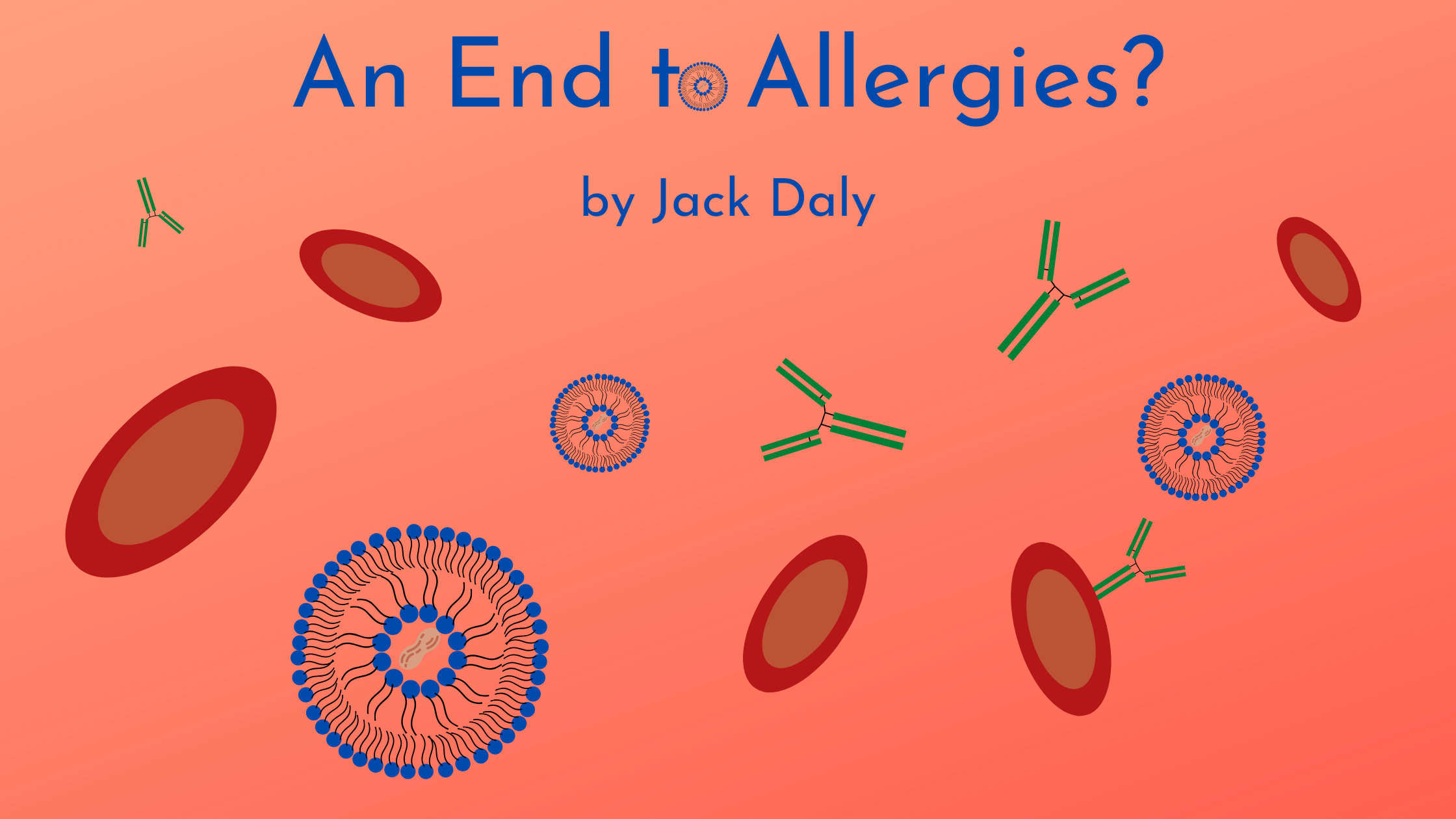 Author: Jack Daly
Author: Jack Daly
For people with food allergies, worrying day in and day out about if what you are eating could potentially land you in the hospital is very difficult. Fortunately, my most severe allergy to peanuts has never landed me in the emergency room despite being prescribed an epinephrine auto injector in case of anaphylaxis, a state of shock due to consumption of an allergen. Many people are not so lucky, and the smallest trace could land them in a hospital overnight despite their best precautions. Allergies are becoming common, and as such, more attention is being given to them. While the root cause has yet to be discovered, some potential treatments are on the horizon. If these treatments are effective, this could alleviate anxiety and potentially save the lives of some of the almost 30% of Americans who have some kind of allergy.
The root causes of allergies may not have a definitive answer but many theories have emerged. One of these theories is that the cleanliness of our surroundings causes our immune systems to react to a higher quantity of harmless triggers. This over-activation is theorized to be due to a decrease in activation compared to our past. Specifically, in the past people were exposed to more parasites which led our immune system to combat these threats when compared to our more sanitized environment within the U.S. in modern times. This theory is supported by the data suggesting almost 30% of Americans have an allergy, which is much higher than in other parts of the world with less ability to maintain near-sterile environments.
Another theory about what causes allergies is associated with the gut microbiota, which suggests the bacteria located in the intestines has an effect on an individual’s risk of various allergies. The research surrounding the gut microbe theory is at its preliminary stages but a correlation has been discovered. Some background about allergies is that they boil down to an overactive immune response, triggered by Immunoglobulin E (IgE). This is a protein that sticks to an identifying protein called an antigen found in food, pollen, animal fur, or even venom. IgE marks it for the immune system and causes the immune response giving symptoms associated with allergies. This marking triggers a mast cell to release a chemical called histamine. Histamine is responsible for the symptoms associated with allergies like inflammation, itching, and sneezing, but in more serious cases it can cause anaphylactic shock. This is when airway swelling, and drop of blood pressure occurs and it can turn deadly for people with severe allergies, which is why many carry an epinephrine auto injector in case this happens.
The path to a potential cure for allergies has not been a simple one, but many have been proposed: from allergy shots to a skin patch that exposes you to a known allergen. There are drawbacks to both of these not being that effective in people past childhood. The most promising new development involves the use of small particles, called nano-particles. Nano-particles encase the allergen in a bubble of fat molecules and can “hide” it from the immune system, releasing very small amounts over time until the immune system recognizes the allergen as no longer dangerous, and it becomes harmless. Another way nanoparticles have been used to prevent peanut allergies is by preventing IgE from binding to the proteins found in the peanuts, preventing the immune system from recognizing it for what it is. This has shown more promising results in clinical tests than previous allergy treatments because previous treatments had led to multiple uncomfortable injections and potential risk of developing anaphylaxis. There are many different ways nanoparticles are being used to treat and prevent allergies and, if even one of these methods continues to prove successful, it could be a breakthrough for getting rid of dangerous allergies in a convenient and safe way for patients.
Ultimately, a lot is still unknown about allergies, their root causes, and the best course of action to help the ever growing number of people that have allergies. However, new and innovative treatment plans are coming out every year. Hopefully more developments involving nanoparticles will continue to provide encouraging results and give people a respite from worrying about the foods they are eating that might potentially make them sick, and also save lives in the process.









